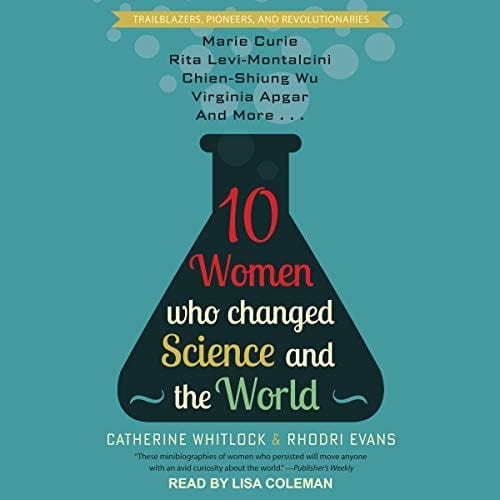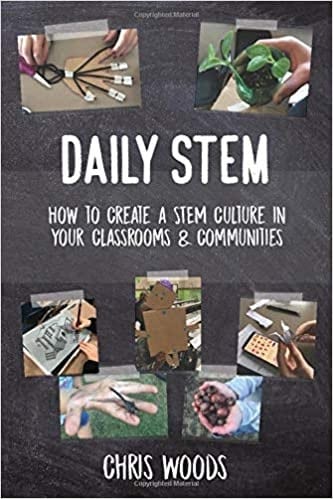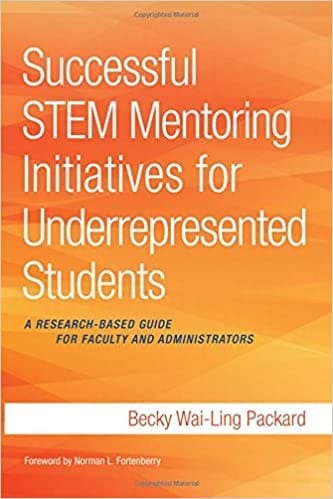Behind the scenes of any innovative and groundbreaking tech community is the STEM academic disciplines. STEM stands for science, technology, engineering, and mathematics.
STEM plays a crucial part in our society, so it’s no wonder the subjects are taught at every level of education from kindergarten to high school and beyond. So, what exactly is STEM and how do you learn it?
Everything you need to know about learning or teaching the exciting fields of STEM can be found in our STEM guide below.
What Is STEM Education?
STEM education is a curriculum that focuses on science, technology, engineering, and mathematics. The curriculum is offered throughout most education institutions, including elementary schools, middle schools, high schools, and universities. The Department of Education has created a plan for implementing STEM education throughout the United States.
According to the Department of Education, “the STEM Education Strategic Plan, published in December 2018, sets out a federal strategy for the next five years based on a vision for a future where all Americans will have lifelong access to high-quality STEM education and the United States will be the global leader in STEM literacy, innovation, and employment.”
The National Science Foundation (NSF) ensures that innovators in STEM have the tools they need. The Foundation “supports research and people by providing facilities, instruments, and funding to support their ingenuity and sustain the U.S. as a global leader in research and innovation.”
What Is STEM Education Used for?
STEM education plays a crucial role in our society as a whole. A few of the essential reasons why STEM education is offered to students can be found below.
- To become competitive in the workforce. STEM careers are critical to the stability of the US. However, STEM crosses various professions that one might not even consider, including customer service and journalism. Those who have some experience in STEM subjects will have an advantage over those who do not.
- To spark interest. Students might not realize all of the possibilities resulting from a STEM career. It’s imperative to inform the younger generations about all the possibilities to await by pursuing the STEM field.
- To develop different skills. STEM education inspires critical thinking, teamwork, adaptation, problem-solving, knowledge application, and tech use that enables the next generation of scientific innovators.
- To bridge gender and ethnic gaps. Math and science are often male-dominated fields. To contrast that and establish more roles for minorities, STEM initiatives and curriculums were created to encourage more people to dabble with the subjects.
Types of STEM Education
A STEM program can be integrated within schools in many different forms. Stem classes in high school can fall into exploratory, introductory, partial immersion, and full immersion types.
Exploratory
This type of program is offered to students interested in the science, technology, engineering, and math fields. After school clubs or summer school are offered in these subjects.
Introductory
This type of program introduces students to STEM throughout the school day. This can happen in the form of math and science projects and units.
Partial Immersion
Here, STEM is at the focus of the curriculum. All students in the school participate in the program in one way or another. Those who are especially interested in STEM can join the STEM ‘school within a school’ where even more instruction is offered.
Full Immersion
A full immersion curriculum prepares students to pursue careers in STEM after graduation. These are non-traditional schools that constantly encourage collaboration with others and have a sense of inquiry.
STEM in Higher Education
Additionally, those who wish to pursue a STEM field in college can enroll in one of the following STEM-focused majors, including astronomy, biology, chemistry, computer science, engineering, earth sciences, health sciences, and information technology.
According to US News, “With so many options on the table, it may be difficult for a student to decide on a STEM major. But with STEM extending across numerous fields, experts say that students won’t be limited in their professional pursuits and should expect to collaborate with their peers.”
There are many careers that STEM graduates can pursue, including becoming web developers, industrial engineers, civil engineers, natural sciences managers, chemists, or architects.
Learning STEM

Science, technology, engineering, and mathematics can be learned in different ways. However, note that the four subjects are broken up into various courses. According to Live Science, “rather than teach the four disciplines as separate and discrete subjects, STEM integrates them into a cohesive learning paradigm based on real-world applications.”
Investing in online and in-person education, scouring the internet for tutorials, and keeping up on the latest and greatest STEM books are all options for those interested in the field.
How Long Does It Take to Learn STEM?
Like any subject or field, learning STEM can be a lifelong venture. STEM curriculums can start at a young age and the learning process continues throughout your life.
From counting numbers in kindergarten to assembling a robot in college, foundational STEM education can take more than 12 years to acquire.
How to Learn STEM: Step-by-Step
Whether you’re teaching a STEM curriculum, striving to learn more, or just curious about lifelong learning at any age, these practical steps are advised.
- Start early learning. Start teaching the concepts of STEM at an early age. Children can absorb important information despite their age.
- Incorporate play. Play can be an influential part of the learning process. As they play, children learn and test theories while developing skills for learning.
- Stress problem-solving skills. These are especially crucial skills in the STEM fields. Asking questions early on can help build skills.
- Incorporate hands-on learning. Many people learn through their hands-on experience, especially in the STEM fields. Conducting experiments and implementing resources also creates a lifelong interest in the subject.
- Develop a growth mindset. Having a growth mindset means you are open to the idea that learning and growing are implemented through dedication and hard work. This is especially important at an early age in STEM, since telling a girl that not everyone is good at math can influence her decision and confidence to pursue STEM education.
The Best STEM Courses and Training

So, what are STEM classes? STEM classes teach children, young adults, and adults the disciplines of STEM in various capacities. Find online, in-person, and even free STEM courses for all ages below.
Best In-Person STEM Courses
While not as popular in today’s age, in-person classes are still available for those who work better in an in-person atmosphere. Find the best in-person STEM classes below.
STEM World
- Course: STEM Pods
- Time: Varies
- Prerequisites: Varies
- Price: Varies
The STEM pods course is intended for young learners. STEM World offers lessons at their Pasadena location and online through their website. Lessons in science, math, and technology, as well as engineering and robotics in small groups, are available.
Best Online STEM Courses
Online courses make learning more accessible than ever before. Learn on your schedule with some of these online STEM courses below.
Udemy
- Course: Careers in futuristic STEM technologies
- Time: 5.5 hours
- Prerequisites: An interest in Science, Technology, Engineering, and Mathematics (STEM)
- Price: $49.99
Designed for students seven to 17 years old, the “Careers in futuristic STEM technologies” course explores artificial intelligence (AI), robotics, and sensors. All the learning is based on the ‘future of work.’ No teleporting necessary.
Future Learn
- Course: Inspiring Young People in STEM: Resources for Activities and Promoting Diversity
- Time: 2 weeks
- Prerequisites: An interest in becoming a STEM ambassador.
- Price: Free or $44 for extra benefits.
Make a difference for the next generation of innovators with the Inspiring Young People in STEM course. Filled with activities and resources that will prepare you to teach STEM.
Best Free STEM Courses
Suppose you are just becoming interested in STEM, considering enrolling in the subject in college, or already teaching it to another generation. In this case, an online free STEM course might be right for you. Invest your time with the following courses.

"Career Karma entered my life when I needed it most and quickly helped me match with a bootcamp. Two months after graduating, I found my dream job that aligned with my values and goals in life!"
Venus, Software Engineer at Rockbot
Coursera
- Course: English for Science, Technology, Engineering, and Mathematics
- Time: 34 hours
- Prerequisites: Beginner level
- Price: Free
This course is presented by the University of Pennsylvania. It is designed for non-English speakers who wish to become fluent in English, specifically around the sciences. Students will learn scientific study while perfecting their English skills.
edX
- Course: An Introduction to Evidence-Based Undergraduate STEM Teaching
- Time: 4-5 hours a week for eight weeks
- Prerequisites: Beginner level
- Price: Free
The introductory course by Cornell University is aimed toward future faculty, graduate students, and postdoctoral fellows. Learn teaching strategies that can be implemented in a STEM classroom. Lessons are already pre-recorded so learn at your own pace with this online course.
Best STEM Books
Books are an excellent resource for those interested in STEM, and there is a read for every age group. Explore some of these below.
‘10 Women Who Changed Science and the World’, Catherine Whitlock, Rhodri Evans, et al.

Explore the lives of legendary leading women in the STEM fields from across the world in 10 Women Who Changed Science and the World. Learn about the women of the 18th and 19th centuries who changed the fields of physics, biology, chemistry, astronomy, and medicine. The book highlights many of those you’re familiar with and some you might not have heard about until now.
‘Daily STEM: How to Create a STEM Culture in Your Classrooms & Communities’, Chris Woods

Learn how to create a sustainable STEM learning culture with practical tips and examples with this book by Chris Woods.
‘Successful STEM Mentoring Initiatives for Underrepresented Students: A Research-Based Guide for Faculty and Administrators’, Becky Wai-Ling Packard and Norman L. Fortenberry

The book is a step-by-step guide aimed at educators who wish to designate mentoring programs targeted toward recruiting and retaining students from underrepresented groups in society.
Written by a STEM mentoring expert, the book explores the key questions and illustrations that many can apply to their personal situation on college campuses across the US.
The book works to broaden access and participation.
Best Online STEM Resources
Resources are abundant online for those interested in pursuing STEM. A few of those include the below.
Bill Nye
Learn from the best, Bill Nye, the science guy that is. If you never chanted Bill! Bill! Bill! In middle school science class, then now is the time to catch up. The Bill Nye website has plenty of resources for those interested in STEM, including home demos, and articles.
Code.org
Start the student learning process early with Code.org. The website is designated for students with an interest in learning to succeed in computer sciences. Code.org teaches how to code and build apps and games.
Along with full-length courses, the website also provides ‘an hour of code,’ which is a one hour tutorial for learners of all ages. There are also resources for teachers looking to implement computer science in their curriculum. The best part? It’s all free.
Should You Learn STEM?

URL: https://unsplash.com/photos/YoadQb46v6k
Alt-text: Glasses on a table.
Caption: Start learning STEM today.
There is no better time to learn and explore the field of STEM. STEM occupations are expected to grow exponentially. According to the Bureau of Labor Statistics, STEM occupations are forecast to grow 76 percent higher than non-STEM job growth in the United States.
Additionally, STEM careers make more than non-STEM related fields. According to RCL Co., “STEM employment paid on average $84,880 compared to $37,020 for non-STEM occupations.”
Maybe most importantly, though, the study of STEM gives the world innovation from generation to generation. Who doesn’t want to be a part of that?
About us: Career Karma is a platform designed to help job seekers find, research, and connect with job training programs to advance their careers. Learn about the CK publication.



